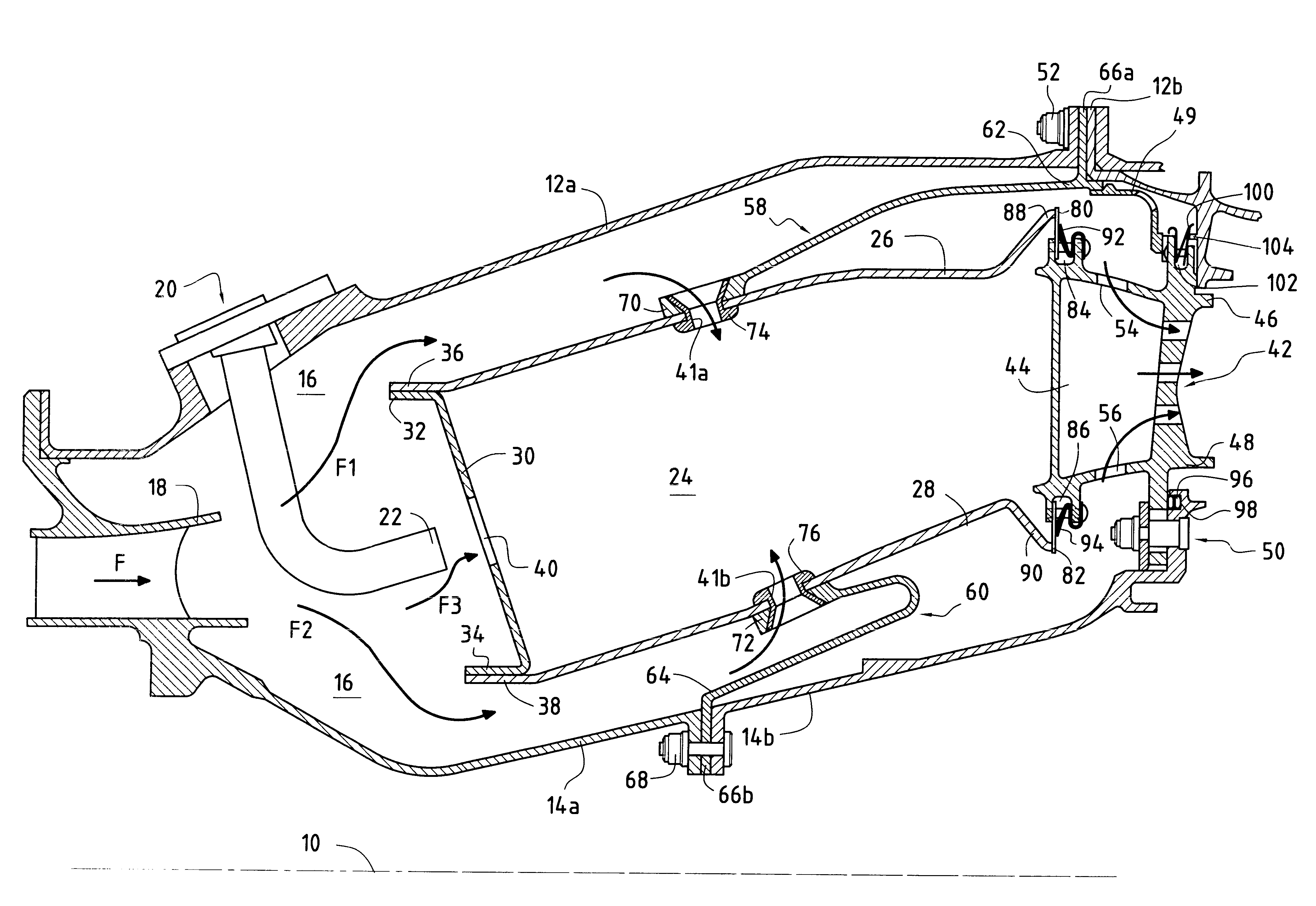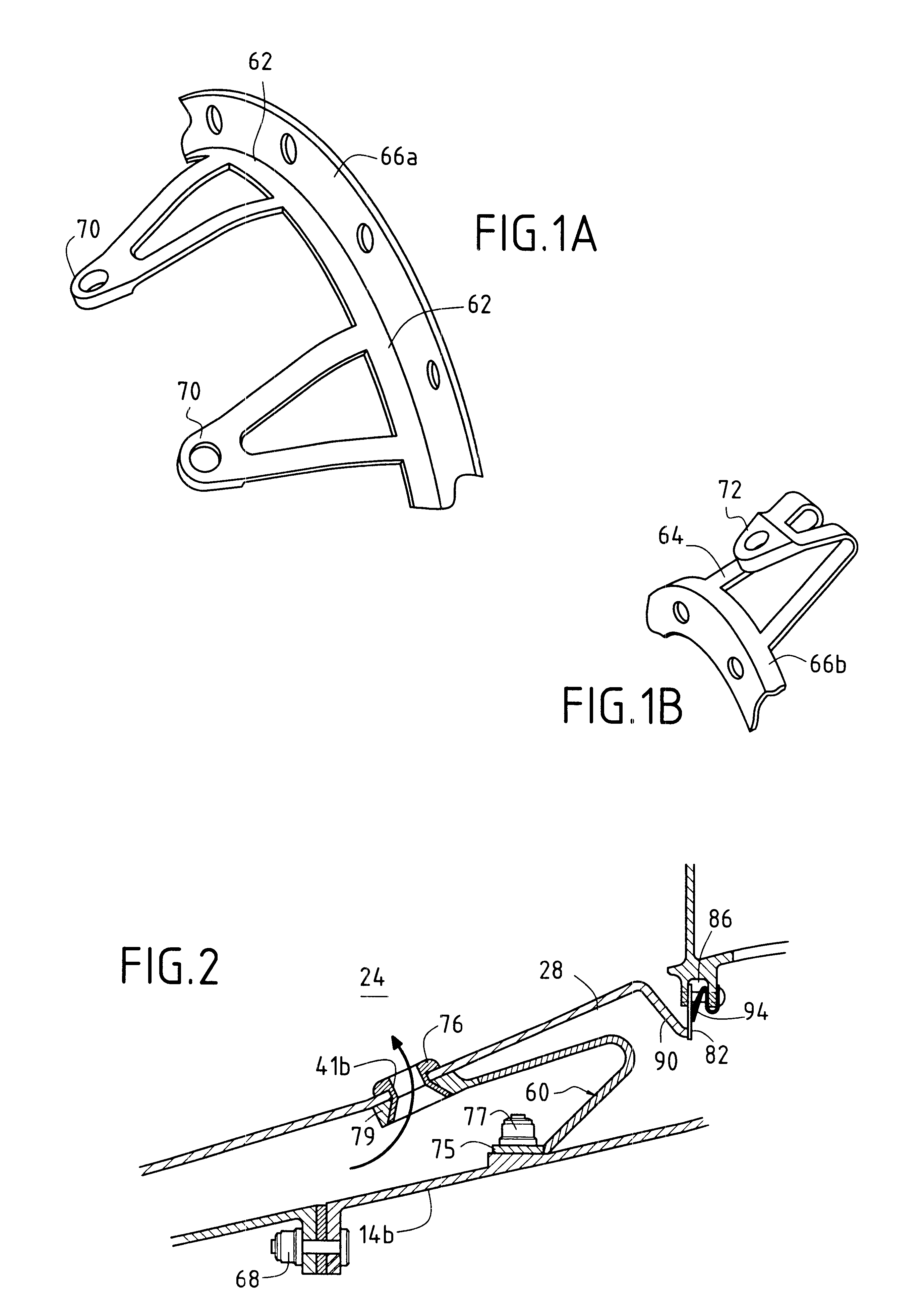Fastening a CMC combustion chamber in a turbomachine using the dilution holes
a technology of combustion chamber and turbomachine, which is applied in the direction of machines/engines, efficient propulsion technologies, light and heating apparatus, etc., can solve the problems of inconvenient use of metal combustion chambers, large differences in thermal expansion coefficients between metal materials and composite materials, etc., to achieve significant weight saving, reduce the size of the connection, and simplify the effect of connection
- Summary
- Abstract
- Description
- Claims
- Application Information
AI Technical Summary
Benefits of technology
Problems solved by technology
Method used
Image
Examples
first embodiment
FIG. 1 shows the invention in which the vertices 70, 72 forming second ends of the tongues are fixed respectively on the outer and inner side walls 26 and 28 of the combustion chamber by being crimped by means of collars 74, 76 inserted from the hearth side of the combustion chamber thorough respective oxidizer feed orifices 41a, 41b and serving to hold the tongue against the combustion chamber wall once crimping has been performed. The real diameter of the feed orifice (dilution hole or primary hole) is matched by the collar whose outer edges (on the hearth side of the chamber) are rounded so as to avoid catching flames.
The bases 62, 64 forming first ends of the tongues as interconnected by the ring 66a, 66b are preferably held between existing flanges for connecting together the upstream and downstream portions of the inner and outer annular shells 14a, 14b and 12a, 12b, and are held securely by fixing means 52, 68, preferably of the bolt type.
In a variant shown in FIG. 2, the ton...
second embodiment
In the invention, as shown in FIG. 3, the second ends of the tongues 70, 72 are fixed respectively to the outer and inner side walls 26, 28 of the combustion chamber via inserts each comprising two coaxial portions fixed to each other (advantageously by brazing or welding), one comprising a collar 74a, 76a pressed against the hearth side of the wall and the other in the form of a ring 74b, 76b surrounding the collar and pressing the eyelet-forming second end of the tongue against the wall. As in the preceding embodiment, the real diameter of the dilution hole or of the primary hole is taken up by the collar whose outer edges are rounded so as to avoid catching flames.
Advantageously, the tongue 58 can have an opening 58a formed close to the second end 70 of the tongue in register with the injection orifice 41a so as to make it easier to feed after assembly. In addition, in the example shown, the first ends of this tongue are no longer welded to a ring mounted between flanges (as show...
PUM
 Login to View More
Login to View More Abstract
Description
Claims
Application Information
 Login to View More
Login to View More - R&D
- Intellectual Property
- Life Sciences
- Materials
- Tech Scout
- Unparalleled Data Quality
- Higher Quality Content
- 60% Fewer Hallucinations
Browse by: Latest US Patents, China's latest patents, Technical Efficacy Thesaurus, Application Domain, Technology Topic, Popular Technical Reports.
© 2025 PatSnap. All rights reserved.Legal|Privacy policy|Modern Slavery Act Transparency Statement|Sitemap|About US| Contact US: help@patsnap.com



